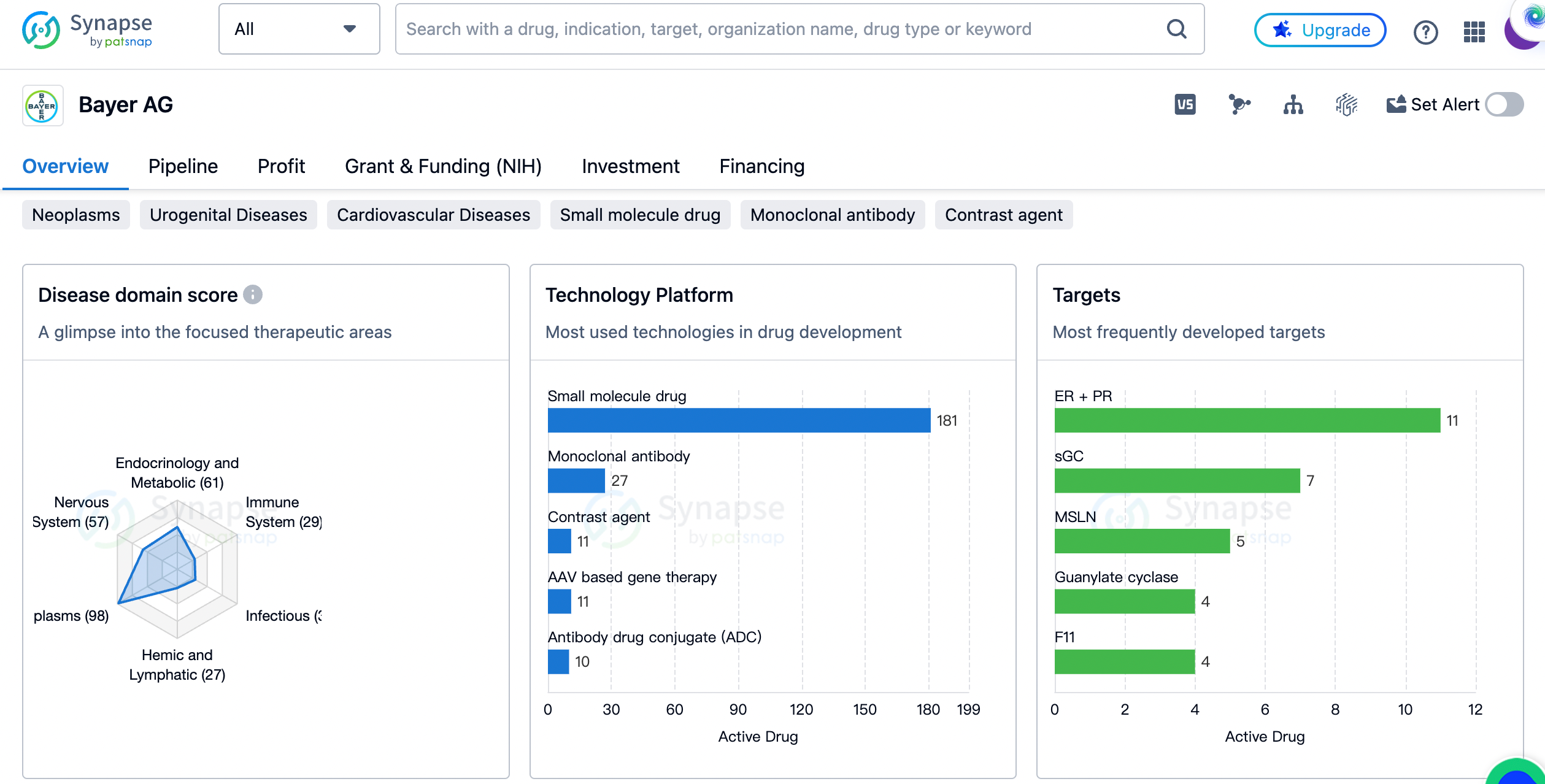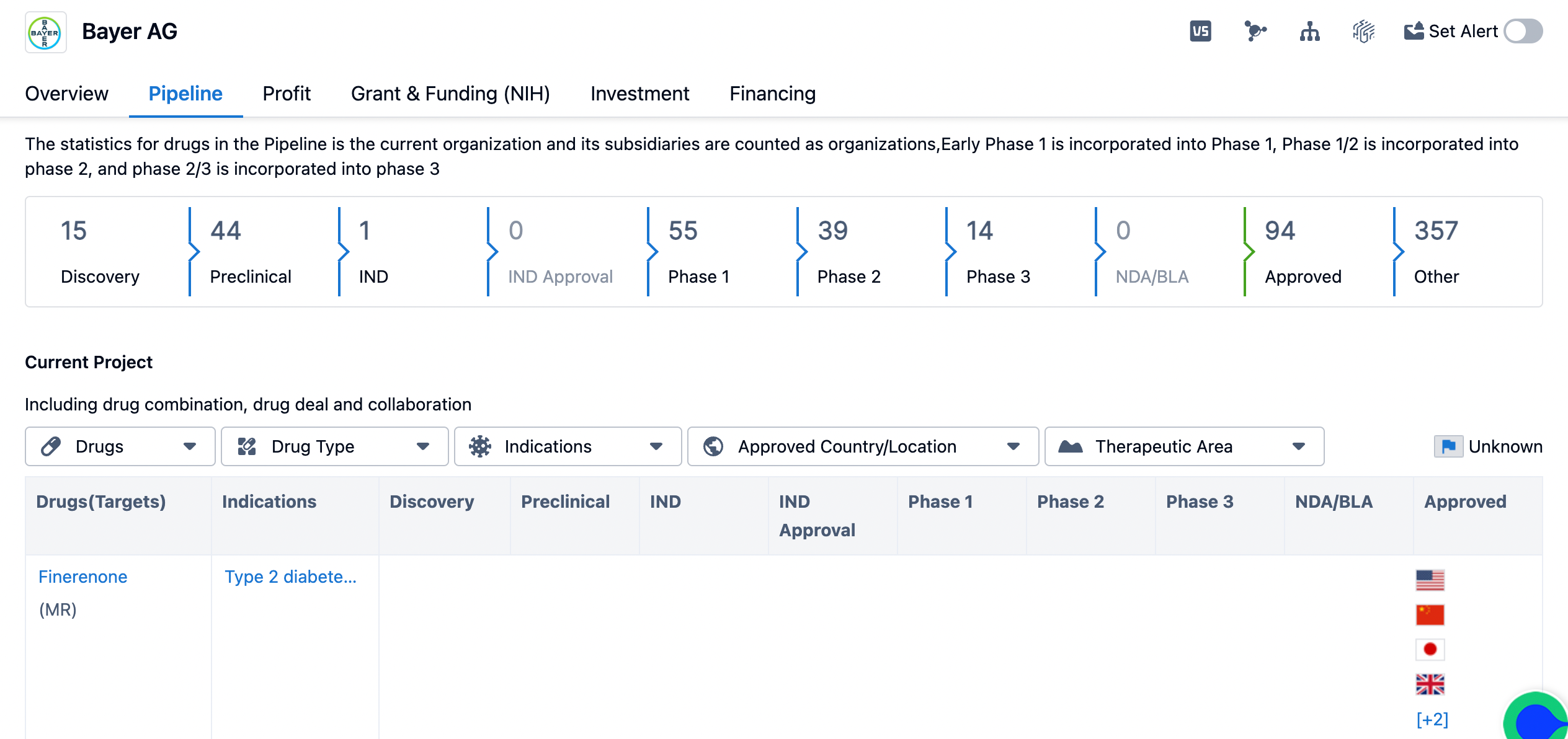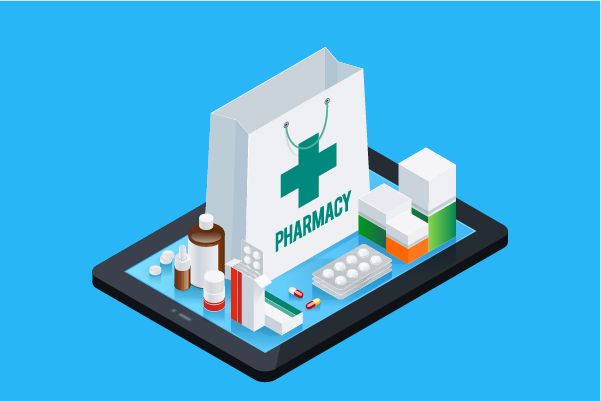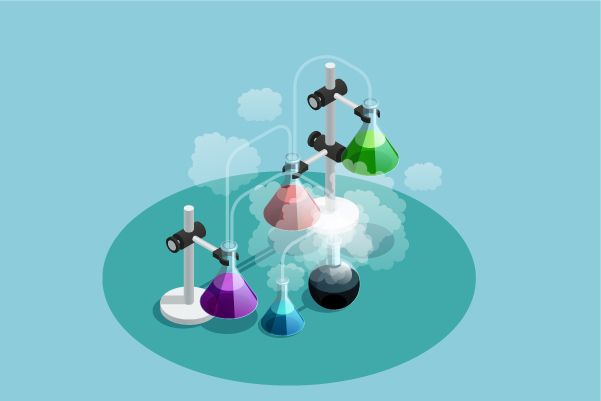Overview of Bayer Pipeline|R&D Progress
Founded in 1863 and headquartered in Leverkusen, Germany, Bayer AG is Germany's largest industrial group. There are branches and factories all over the world. Polymers, medicine and health care, chemicals and agriculture are the company's four pillar industries. Its businesses include human and veterinary medicines, consumer health products, agricultural chemicals, seeds and biotechnology products. In this report, we will analyze the distribution of therapeutic areas, the most frequently developed targets, and the pipeline of Bayer AG.
👇Please click on the image below to directly access the latest data (R&D Status | Core Patent | Clinical Trial | Approval status in Global countries) of Bayer.
An overview of the distribution of therapeutic areas
The organization has a diverse portfolio of drugs that cater to various medical needs. Neoplasms, which refer to abnormal growth of cells, have the highest drug count with 98 drugs. This indicates that Bayer AG has a strong focus on developing treatments for cancer. Urogenital Diseases and Endocrinology and Metabolic Disease follow closely with 64 and 61 drugs respectively. These therapeutic areas encompass a wide range of conditions related to the urinary and reproductive systems, as well as disorders of the endocrine system. Nervous System Diseases and Skin and Musculoskeletal Diseases also have a significant number of drugs with 57 and 56 respectively. This suggests that Bayer AG is actively involved in developing treatments for neurological disorders and conditions affecting the skin and musculoskeletal system. Cardiovascular Diseases, Other Diseases, Respiratory Diseases, and Infectious Diseases have drug counts ranging from 30 to 52, indicating a comprehensive approach to addressing various medical conditions. The remaining therapeutic areas, including Immune System Diseases, Digestive System Disorders, Congenital Disorders, Hemic and Lymphatic Diseases, Eye Diseases, Otorhinolaryngologic Diseases, and Mouth and Tooth Diseases, have drug counts ranging from 4 to 29.
The most frequently developed targets by Bayer
The organization has focused on a diverse range of targets for drug development. The most frequently developed target is ER + PR, with 11 drugs targeting this specific receptor. ER + PR refers to estrogen receptor and progesterone receptor, which are commonly associated with breast cancer. sGC, which stands for soluble guanylate cyclase, is the second most frequently developed target with 7 drugs. This target is involved in various physiological processes and has implications in cardiovascular diseases. MSLN, Guanylate cyclase, F11, PSMA, AR + ER + MR + PR, ER, AHR, AR, and PR are among the other frequently developed targets, each with 3 to 5 drugs targeting them. These targets are associated with a range of diseases, including cancer, cardiovascular diseases, and hormonal disorders. Bacterial DNA gyrase + Topoisomerase IV, fungal CYP51A1, BUB1, factor XIa, P2X3 receptor, F10, IRAK4, Potassium channel, and α2C-AR are also targeted by Bayer AG, albeit with a lower drug count.
overview of Bayer AG's pipeline
The pipeline consists of drugs at various stages of development. The majority of drugs are in the preclinical stage, with 44 drugs undergoing testing in laboratory and animal models. This indicates a strong focus on research and development. Discovery, the initial stage of drug development, has 15 drugs in the pipeline. Phase 1, Phase 2, and Phase 3 have 55, 39, and 14 drugs respectively, indicating progression through clinical trials. The pipeline also includes 94 drugs that have been approved, indicating a successful track record in bringing drugs to market. Additionally, there are 357 drugs categorized as "Other," which could include drugs in various stages of development or those that do not fit into the traditional phases of drug development.
In conclusion, Bayer AG is a pharmaceutical organization with a rich history and a strong presence in the field of biomedicine. The distribution of therapeutic areas indicates a diverse portfolio of drugs, with a particular focus on neoplasms, urogenital diseases, endocrinology and metabolic diseases, and nervous system diseases. The most frequently developed targets include ER + PR, sGC, and MSLN, among others, indicating a broad range of diseases being targeted by Bayer AG.
The pipeline of Bayer AG showcases a significant number of drugs in the preclinical stage, indicating a strong emphasis on research and development. The organization has also successfully brought numerous drugs to market, with 94 drugs approved. Overall, Bayer AG's commitment to innovation and addressing various medical needs positions it as a key player in the pharmaceutical industry.






